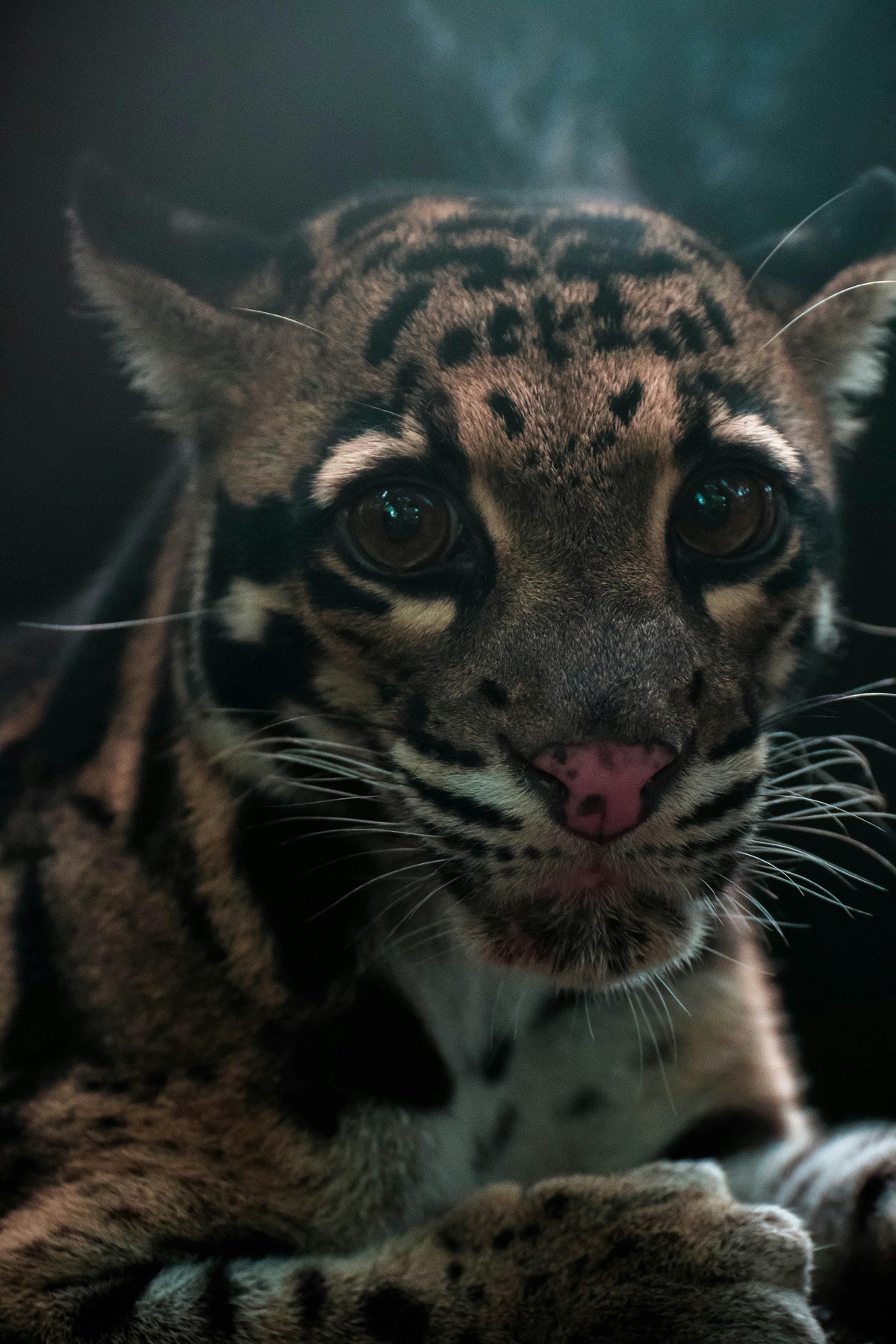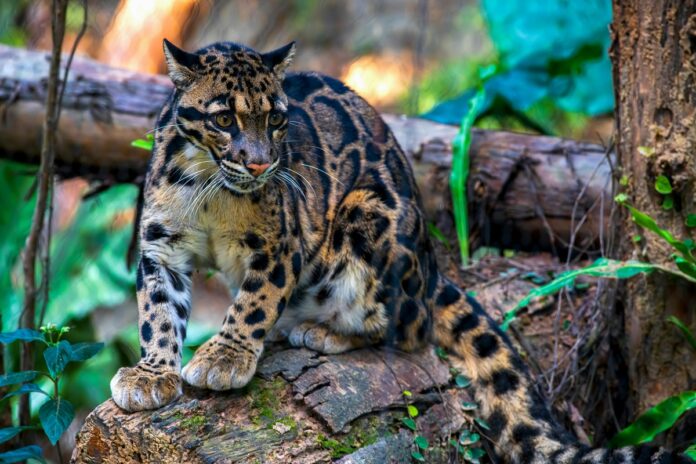The clouded leopard is one of the world’s most elusive and fascinating big cats. Known for its stunning coat, incredible agility, and mysterious nature, this cat is a true wonder of the animal kingdom. Despite its name, the clouded leopard is not a true leopard. It belongs to its unique genus, Neofelis. Found in the dense forests of Southeast Asia, this cat is a master of stealth and survival. Let’s explore the world of the clouded leopard and learn about its life, behavior, and challenges.
What is a Clouded Leopard?

| Category | Details |
|---|---|
| Common Name | Clouded Leopard |
| Scientific Name | Neofelis nebulosa (Mainland clouded leopard); Neofelis diardi (Sunda clouded leopard) |
| Class | Mammalia (mammals) |
| Order | Carnivora (carnivores) |
| Family | Felidae (cats) |
| Genus | Neofelis |
| Habitat | Tropical and subtropical forests, mountainous regions, mangrove swamps |
| Distribution | Southeast Asia (Nepal, India, Bhutan, Myanmar, Thailand, Malaysia, China) |
| Size | 2–3 feet (body length); tail adds 2–3 feet |
| Weight | 25–50 pounds |
| Lifespan | Wild: 11 years; Captivity: Up to 17 years |
| Diet | Carnivorous (deer, wild boar, monkeys, birds, porcupines, small mammals) |
| Unique Features | Cloud-like coat patterns, long tail, longest canine teeth relative to body size |
| Reproduction | 1–5 cubs per litter; cubs stay with their mother for 10 months |
| Conservation Status | Vulnerable (due to habitat loss and poaching) |
| Predators | Humans (primary threat); occasionally larger predators like tigers |
| Adaptations | Excellent climbers, flexible ankles, powerful jaws, camouflage coat |
The clouded leopard (Neofelis nebulosa) is a medium-sized wild cat. It is named for the cloud-like patterns on its fur. These patterns are large, irregular spots with dark edges and lighter centers. The coat is tan or yellowish with black and gray markings. This beautiful camouflage helps the clouded leopard blend into its forest habitat.
Clouded leopards are not true leopards. They are part of the genus Neofelis, which includes two species: the clouded leopard (Neofelis nebulosa) and the Sunda clouded leopard (Neofelis diardi). The Sunda clouded leopard is found on the islands of Borneo and Sumatra, while the clouded leopard lives on the mainland.
Physical Characteristics
Clouded leopards are unique in many ways. They have a sleek, muscular body built for climbing and jumping. Their legs are short but strong, and their paws are large with sharp claws. These features make them excellent climbers.
One of the most striking features of the clouded leopard is its tail. The tail is long and bushy, almost as long as its body. It helps the cat balance while climbing trees. Clouded leopards also have large, sharp canine teeth. Their teeth are the longest, relative to body size, of any living cat. This makes them powerful hunters.
Adult clouded leopards weigh between 25 to 50 pounds. They are about 2 to 3 feet long, not including their tail. Males are usually larger than females.
Habitat and Distribution
Clouded leopards are found in the forests of Southeast Asia. Their range includes countries like Nepal, India, Bhutan, Myanmar, Thailand, Malaysia, and China. They prefer dense tropical and subtropical forests. These forests provide plenty of cover for hunting and hiding.
Clouded leopards are highly adaptable. They can live in lowland rainforests, mountainous regions, and even mangrove swamps. However, they are rarely seen because they are so secretive and well-camouflaged.
Behavior and Lifestyle
Clouded leopards are solitary animals. They spend most of their time alone, except during mating season. They are primarily nocturnal, meaning they are active at night. During the day, they rest in trees or dense vegetation.
These cats are excellent climbers. They can climb trees headfirst, hang from branches with their hind legs, and even climb down trees backward. This ability helps them escape predators and hunt prey in the trees.
Clouded leopards are also strong swimmers. They are not afraid of water and can cross rivers and streams with ease.
Diet and Hunting
Clouded leopards are carnivores, meaning they eat meat. Their diet includes a variety of animals, such as:
Deer
Wild boar
Monkeys
Birds
Porcupines
Smaller mammals
They are ambush predators. This means they stalk their prey quietly and then pounce with a sudden burst of speed. Their sharp claws and teeth help them catch and kill their prey quickly.
Clouded leopards are known for their ability to hunt in trees. They can leap from branch to branch to catch birds or monkeys. They are also strong enough to drag their prey up into the trees to eat in safety.
Reproduction and Lifespan
Clouded leopards reach maturity at about 2 years old. They mate throughout the year, but the peak breeding season varies by region. After mating, the male and female go their separate ways.
The female gives birth to 1 to 5 cubs after a gestation period of about 85 to 93 days. The cubs are born blind and helpless. They rely on their mother for milk and protection.
The cubs open their eyes after about 10 days. They start eating solid food at around 10 weeks old. By 6 months, they are fully weaned and begin to learn hunting skills from their mother. The cubs stay with their mother for about 10 months before becoming independent.
In the wild, clouded leopards live for about 11 years. In captivity, they can live up to 17 years.
Unique Adaptations
Clouded leopards have several unique adaptations that help them survive in the wild:
Camouflage: Their cloud-like coat patterns help them blend into the forest.
Climbing skills: Their strong legs, sharp claws, and long tails make them expert climbers.
Powerful jaws: Their long canine teeth allow them to take down large prey.
Flexible ankles: They can rotate their hind ankles, which helps them climb down trees headfirst.

